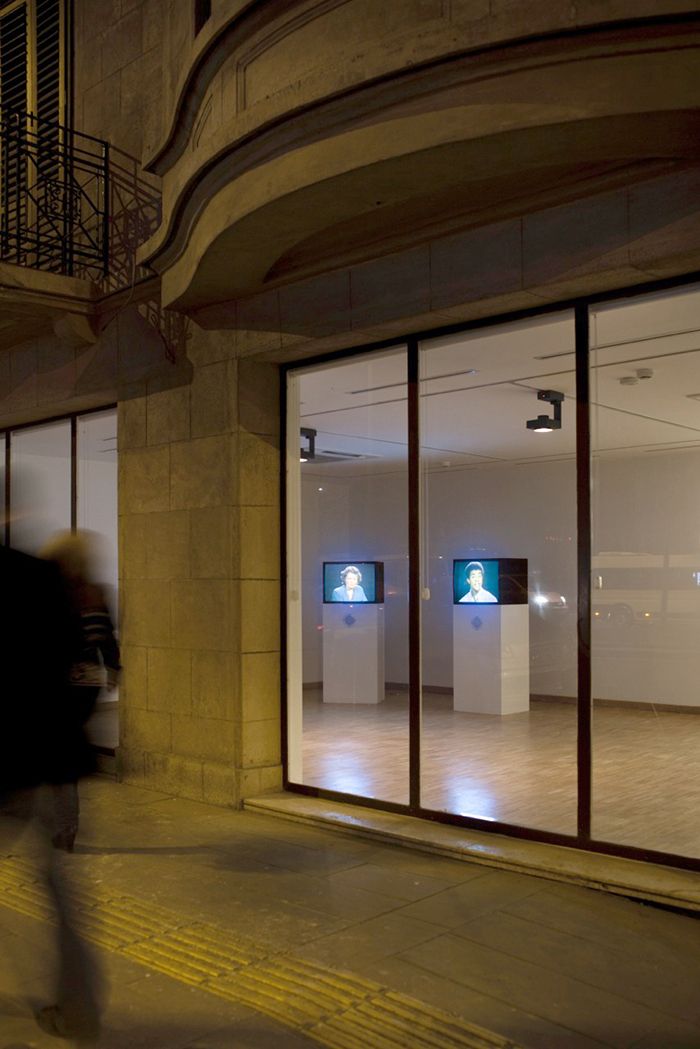Works From The Collection
of L'Internationale
Salt Ulus
February 27 – April 6, 2014

Installation view
Photo: Cemil Batur Gökçeer
Photo: Cemil Batur Gökçeer
The selected works from the L’Internationale collection refer to issues of authoritarian power, in response to an increase in social movements in Turkey, as well as debates around public space and gender politics. By gathering these positions together at this moment in time the exhibition aims to reflect upon local stories through the reading of five internationally renowned, iconic works.
The exhibition presents one work from each of the collections of L’Internationale partner museums: Museum van Hedendaagse Kunst Antwerpen (M HKA/Belgium), Van Abbemuseum (VAM/The Netherlands), Museu d’art Contemporani de Barcelona (MACBA/Spain), Museo nacional centro de arte Reina Sofía (MNCARS/Spain) and Moderna Galerija (MSUM+MG/Slovenia).
The exhibition presents one work from each of the collections of L’Internationale partner museums: Museum van Hedendaagse Kunst Antwerpen (M HKA/Belgium), Van Abbemuseum (VAM/The Netherlands), Museu d’art Contemporani de Barcelona (MACBA/Spain), Museo nacional centro de arte Reina Sofía (MNCARS/Spain) and Moderna Galerija (MSUM+MG/Slovenia).
Good Boy, Bad Boy (1985)
Bruce Nauman
English
In Bruce Nauman’s Good Boy, Bad Boy (1985) two professional actors are given the task of repeating the same hundred sentences for five consecutive renditions. The actors change their pronunciation at each repetition, from neutral recitations to extremely emotional readings. The schematic rhythm of these sentences evokes associations of speech exercises and school recitations, but also of indoctrination and brainwashing.
Waiting for Tear Gas
white globe to black
(1999-2000)
Allan Sekula
Allan Sekula’s Waiting for Tear Gas (1999-2000) consists of photographs taken in Seattle during the protests against the World Trade Organization Ministerial Conference. The work highlights new forms of global activism by revealing more sincere and accurate images than the mainstream media.
Political Advertisement VIII: 1952-2012 (2012)
Antoni Muntadas and Marshall Reese
English
Political Advertisement VIII: 1952-2012 (2012) documents the TV spots —from Eisenhower in 1956 through Clinton, Bush, Obama and the 2012 campaign— without commentary, to reveal the political use of advertising tactics and increasingly applied techniques of manipulation that feature in the media.
Rhythm 0 (1974)
Marina Abramović
In the performance Rhythm 0 (1974), Marina Abramović remained completely passive for six hours in front of a table containing 72 objects, some, such as sugar, honey, and a rose offered the potential for pleasure and others such as knives, a whip, scissors, and a gun (with a single bullet) suggested the potential for torment. During these six hours, she was fed, cut, soaked in water and eventually asked to aim the loaded pistol at her own neck. This emotional work tested Abramović’s faith, concentration, and willpower while simultaneously revealing the varying natures, both supportive and vindictive, hidden under the surface of a normally passive art audience.
VB 25 (1996)
Vanessa Beecroft
Performance VB 25 was recorded at the Van Abbemuseum, just before the opening of the exhibition ID in December 1996. The seven young women who perform in the video all wear the same pullover and white panties and are styled with the same red nail polish and black wig. Within the frame of the camera the girls continuously change positions independent from one another. During their performance the girls are instructed not to communicate with each other, or with the public. This lack of interaction makes their presence disorienting and their identical appearance reinforces the sense that they do not relate to real people. Inspired by film, literature and current events, Beecroft’s performances are existential encounters between models and an audience, the voyeur’s shame and their expectations.

